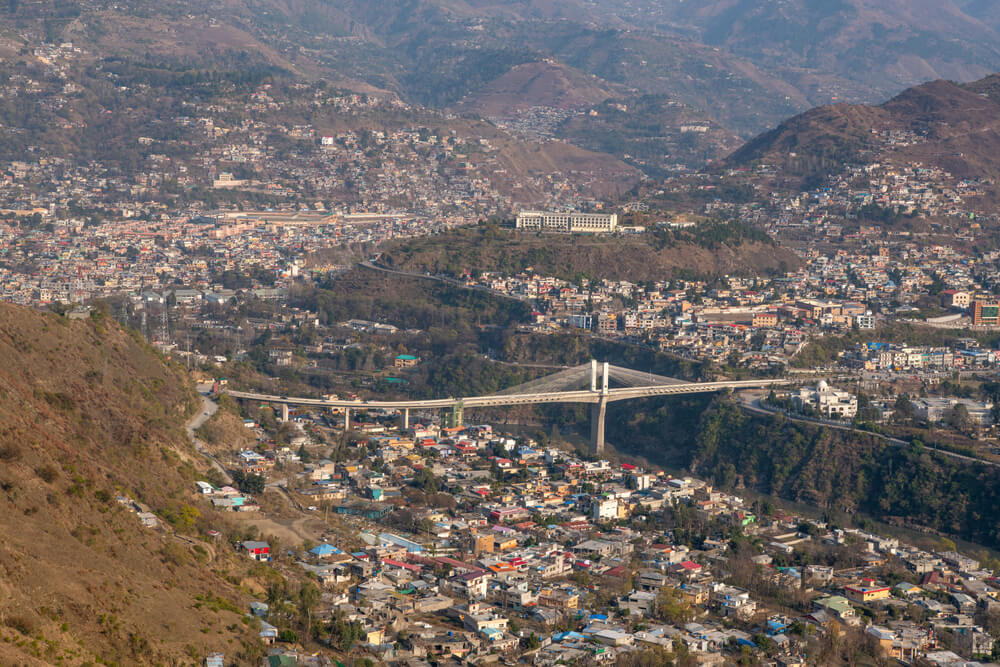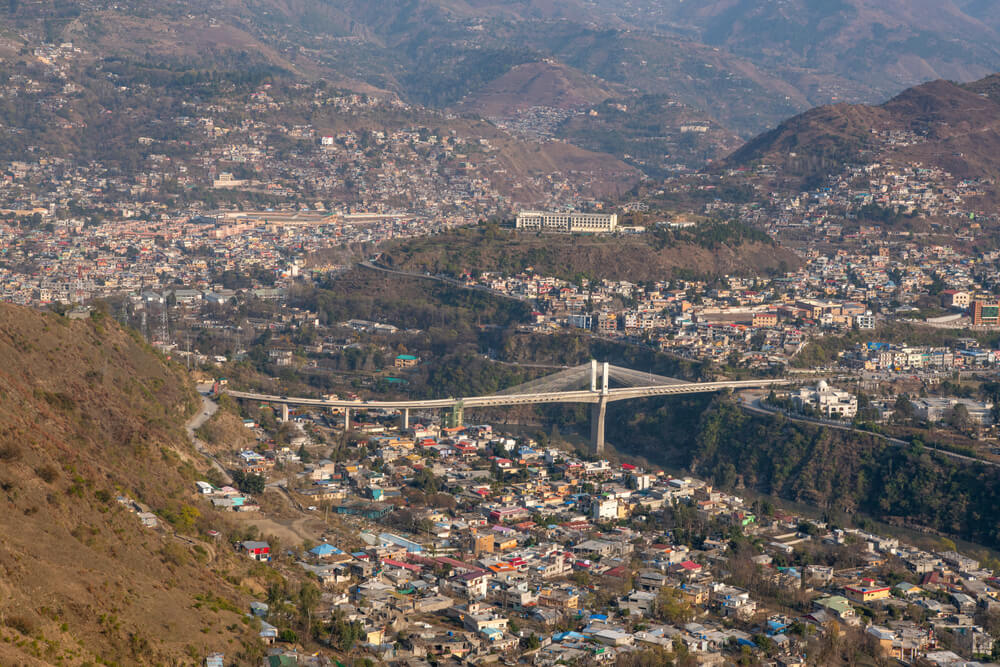Places to Visit In Muzaffarabad
Muzaffarabad is the capital of Azad Kashmir and the region’s largest town. It also ranks as the sixty-first largest city in Pakistan. The city can be found in the Muzaffarabad District, near the Neelum and Jhelum rivers. Attractions for vacationers are Muzaffarabad and the Neelum Valley.
In this section, we will talk about some of the best places to visit in Muzaffarabad. Muzaffarabad, located in Azad Kashmir, has become an extremely well-known traveler destination because of all the beautiful locations to visit in the city. In addition to the tourism industry, Muzaffarabad’s heritage and culture contribute to the city’s overall value.
Muzaffarabad
The city of Muzaffarabad serves as the administrative center of Azad Kashmir, located approximately 138 kilometers (86 mi), a significant distance from Rawalpindi and Islamabad; Kohala bridge and Hazara pass provide access to the motorway. It is situated where the Jhelum and the Neelum rivers come together. There are many best places to visit in Muzaffarabad. The healthy growth of making furniture and carving wood are two examples of the region’s traditional cottage industries.
Crafts that involve creating garments and embroidering are the most famous in the area. The traditional dishes are called Qulcha and Bakar Khani. Culinary items from Muzaffarabad are both delicious and popular nationally and internationally. Because of the abundant natural resources, there is a significant opportunity for the tourism industry to develop the area that is presently receiving an increasing amount of focus.
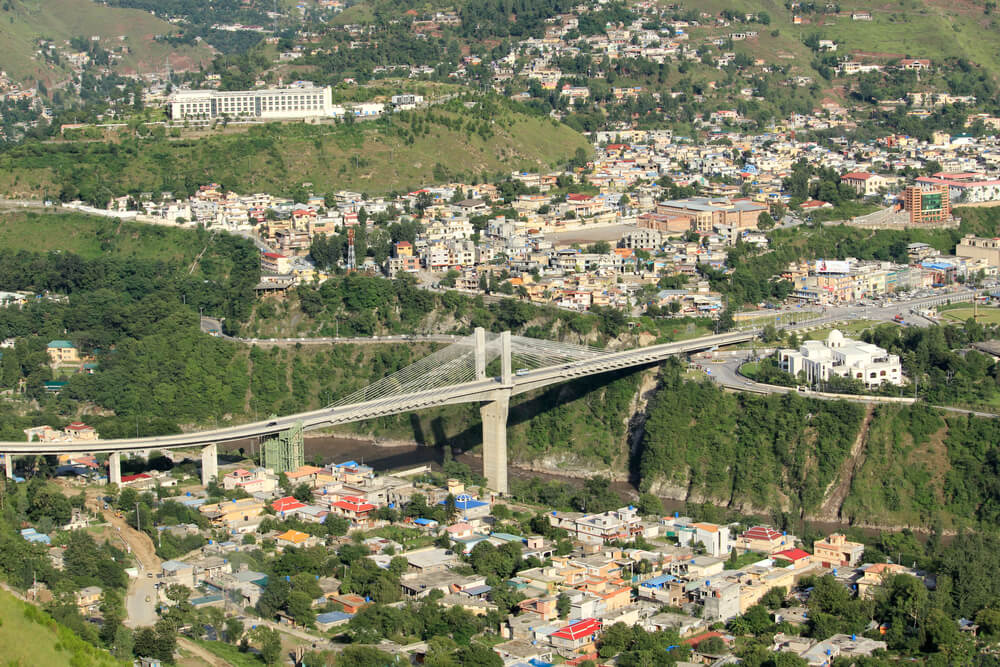
Farming other animals and goats is also developing a reputation as a lucrative commercial proposition. On the other hand, agriculture and fruit are still reviving themselves and are not performing and going up to their full potential. Handicrafts, Gubba, buttons, embroidery rugs, and other small-scale enterprises are included in this category, as well as Numdhas, Shawls, Papier-Mache, and Wood Work, which are all well-known across the globe.
Weather in Muzaffarabad
Muzaffarabad experiences a wide range of average temperatures. When humidity is considered, temperatures feel pleasant for part of the year. Still, they are frequently too hot during the summer and too cold in the winter, with a probability of rain or snow for most of the year. Compared to tourist locations globally, the region is less temperate than some, ranking in the 25th percentile for pleasant weather.
When to Visit Muzaffarabad, Azad Kashmir
Regarding temperature, July, June, and August are the warmest months to visit Muzaffarabad. The most generous time of the year is typically around the middle of June when daytime highs are frequently above 94.1°F (34.5°C), and nighttime lows are infrequently below 69.7°F (20.9°C). The coldest month of the year is January, with daytime highs of 15°C and lows of 5°C. The hottest month of the year is June, with average daytime temperatures of 40°C and overnight lows of 25°C. One can choose to visit according to the choice they want to experience in the area.
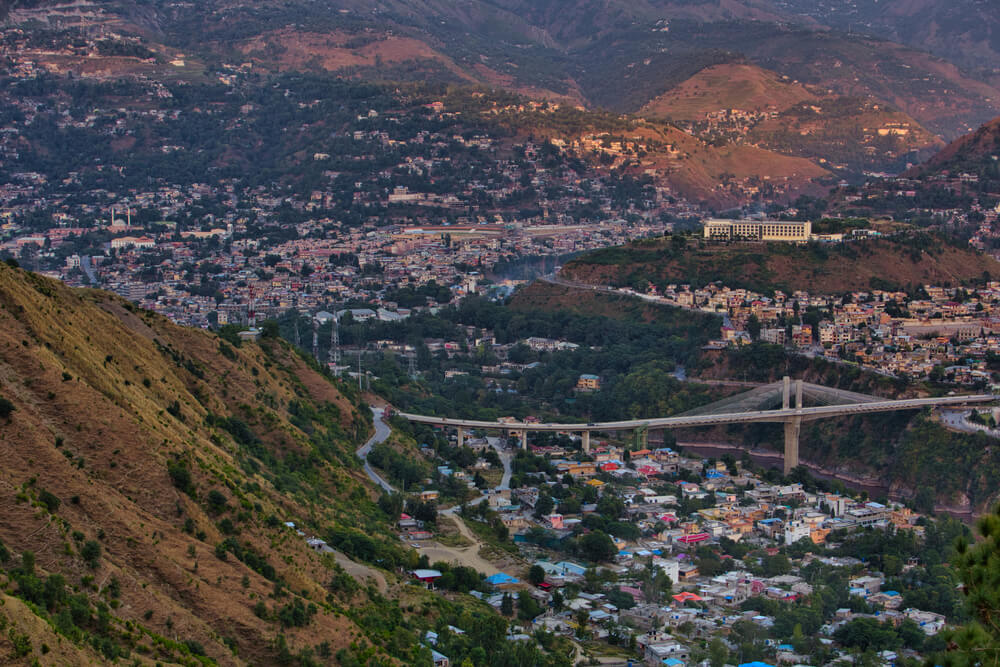
Things to Do in Muzaffarabad
There are many tourist places in Muzaffarabad and many activities and things to be done in Muzaffarabad, which you will know when you go through the article till the end.
How to Reach Muzaffarabad?
The city is approximately 76 kilometers from Abbottabad and about 138 kilometers from Rawalpindi. The city of Muzaffarabad is now linked to the capital of Pakistan, Islamabad, by a motorway, which will likely increase commercial activity between the Land and the actual territory. So you can reach Muzaffarabad using the highway.
Where to Stay
There are many hotels, resorts, and tourist places in Muzaffarabad where you can stay peacefully.
15 Best Places To Visit In Muzaffarabad, Pakistan
The 15 best places to visit in Muzaffarabad, Pakistan, are as follows.
Pir Chinasi
Not only is Pir Chinasi a beautiful place to visit because of its picturesque sceneries, but it is also revered as a holy spot by Sufi believers in Azad Kashmir. Moreover, in Azad Kashmir, the Pir Chinasi region is well known for the paragliding activities that can be enjoyed there. Therefore, you must include this location on the itinerary of things to see and do in Muzaffarabad.
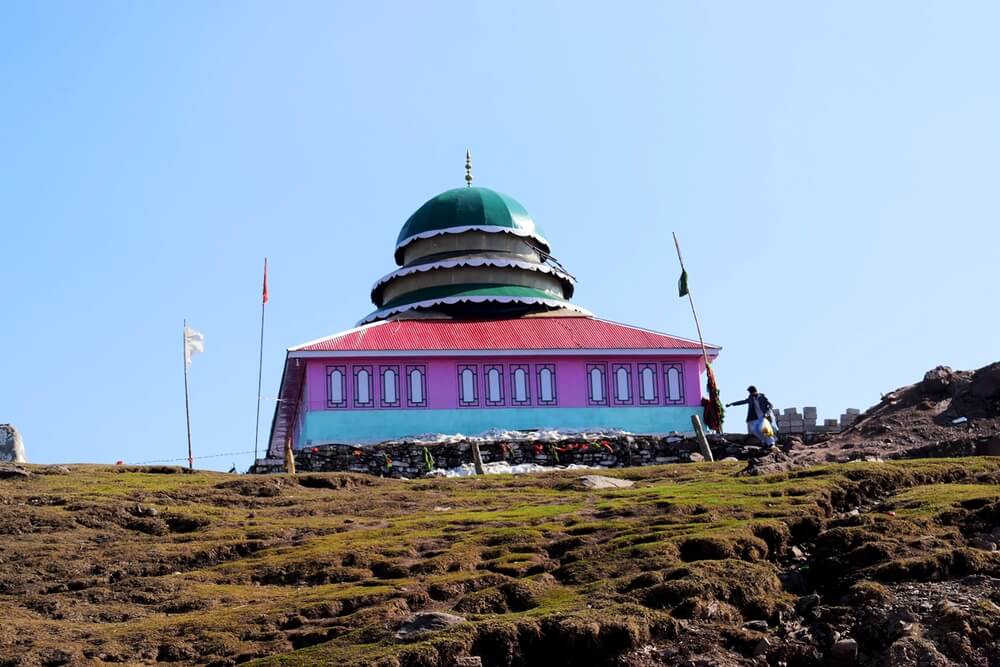
Kohala Bridge at Muzaffarabad
One road from Azad Kashmir to Punjab in Pakistan crosses the Kohala Bridge over the Jhelum River. The Jhelum River is a tributary of the Indus River. The town of Kohala, where the bridge may be found, is 38 kilometers north of Murree and 35 kilometers south of Muzaffarabad. A flood in 1890 was responsible for the destruction of a bridge built in 1877. In 1899, a second transportable steel bridge was built, but it was also destroyed by flooding in 1990. In 1993, a third bridge was built on Union Council Birote Kalan’s northern outskirts, located in Abbottabad District. The Muzaffarabad and Bagh District of Azad Kashmir can be accessed by the Kohala bridge, which acts as a gateway. This is one of the historical sites to visit in Muzaffarabad.
Dhani Waterfall
Neelum Valley in the Muzaffarabad District of Azad Kashmir in Pakistan is home to a waterfall known as Dhani Waterfall, sometimes referred to as Dhani Noseri Waterfall. It is located approximately 24 miles (38 kilometers) from the Muzaffarabad District. The waterfall drops from the most significant distance in Neelum Valley.
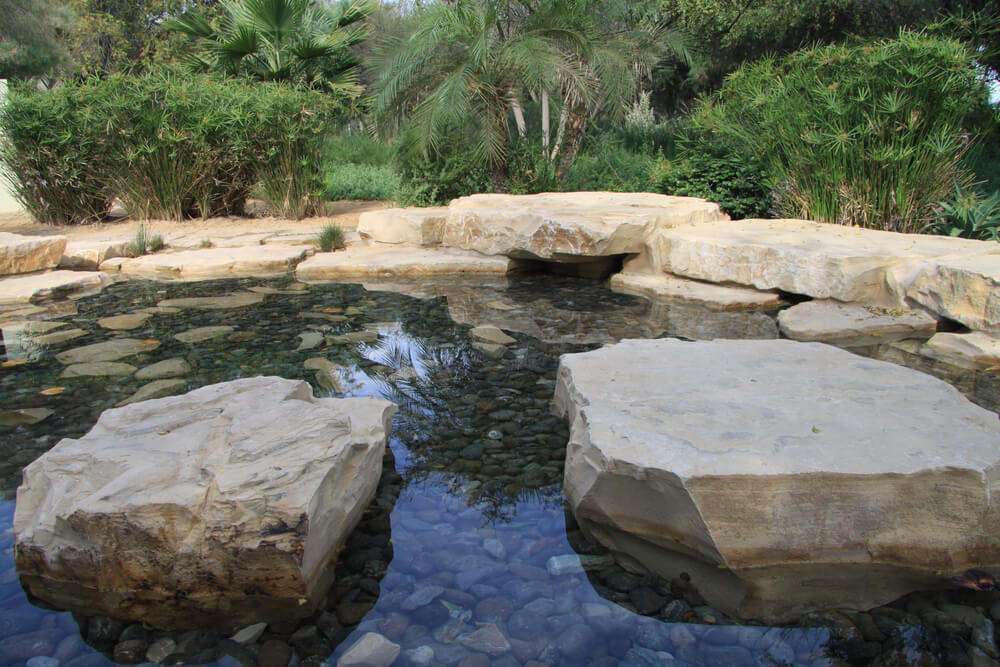
Quaid-e-Azam Tourist Lodge at Muzaffarabad
The historical tourist lodge Barsalla can be found about 100 kilometers from Islamabad and about 40 kilometers from Murree. However, it is only three kilometers from the Murree Kohala Kohala Bridge, which serves as the entry point into Azad Jammu and Kashmir (AJK) when traveling to Muzaffarabad via Kohala.
The historical significance of this lodge, which was established under the rule of the Dogra, lies in the fact that Quaid-e-Azam, the founder of Pakistan, stayed here in 1944 on his way back from Seri Nager. This lodge was constructed during the rule of the Dogra. This same chair, occupied by Quaid, can be found here in the lodge until today. When traveling between Rawalpindi and Srinagar, the emperors of the Dogra dynasty would rest at this location.
The AJK administration has renovated it, and seven guest rooms are now available. During the hot summer months, a refreshing wind provided by the river Jhelum can be felt. Visitors will never forget their time spent at this historically significant resort.
The Red Fort
The Red Fort, also famous as the Muzaffarabad Fort, is another tourist place in Muzaffarabad. It dates back to the 17th century and can be found at Muzaffarabad, located in Azad Jammu and Kashmir, Pakistan. The Chak dynasty from Kashmir was responsible for its construction. The locals call the fort the “Rutta Qila,” or they may call it the “Qila.”
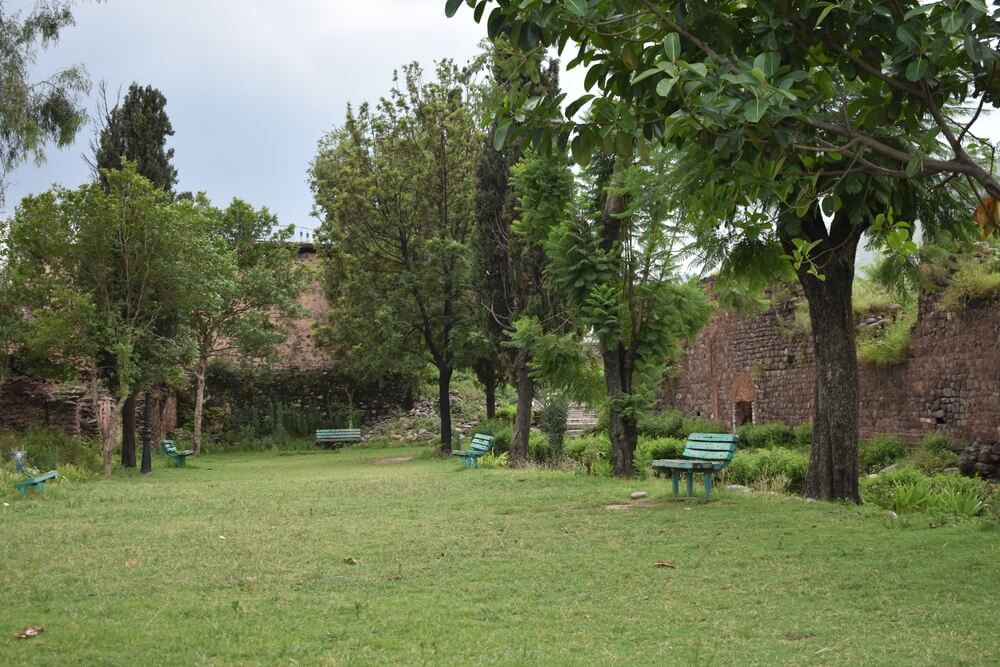
It is clear from looking at the fort’s architecture that its construction required the assistance of many highly skilled professionals in design and structure. The river that was initially known as the Kishenganga River, now known as the Neelum River, surrounds it on three sides. The portion of the fort located more to the north featured terraces that descended downstairs, leading to the riverbank.
However, particular areas on the northern side have been damaged, in contrast to the eastern side, which was very well protected from the dangers of flood waters. In addition, there was once a thriving commercial establishment at the fort’s gateway, where there are now only remnants of the old inn.
Patikka at Muzaffarabad
Patika is a town located in Azad Kashmir in Pakistan. It is approximately 93 kilometers (or 58 miles) northeast of Islamabad, the capital city of Pakistan. It is also recommended as one of the top places to visit when you are in the area.
Sain Saheli Sarkar Darbar
Kashmir is known as “the country of Saints” because notable individuals who lived here devoted their entire lives to spreading the teachings of Islam. This is in complement to the area’s inherent beautiful appeal. For example, along with other religious figures, Hazrat Sharf Uddin Abdul Rehman, also known as Bulbul Shah (R.A.), arrived in Kashmir and began evangelizing for Islam there. Likewise, Hazarat Emir Kabir Syed Ali Hamdani was crucial in promoting and enlightening Islamic values. Thus, the essence of Islam spread to Kashmir’s remote regions and brought about radical ideological shifts among the populace. This booklet attempts to meet the needs of tourists and followers visiting the region while also considering the historical importance of these spiritual figures.
The shrine of Hazrat Sakhi Saheli Sarkar is situated in Muzaffarabad’s capital city’s District Headquarter office complex (formerly the Old Civil Secretariat). The shrine traditionally serves as a hub for spiritual inspiration and religious activities. It is the main draw in the city’s capital. Hazrat was a member of the Multan-based Syed family. Later, his ancestors relocated to Gujrat. He used to spend a lot of time in prayer and meditation. Male followers of Hazrat were referred to as “Aria.” and referred to the women as “Saheli.” He was, therefore, also known by the names Sayin Saheli and Sayin Aria.
However, some reliable sources claim that Syed Zulfiqar Shah was his real name. He had been observing meditation in Hassan Abdaal, Haripur, Havelian, Mansehra, and Muzaffarabad since he had a stronger tendency toward mysticism. As a result, a sizable portion of his followers is also from the NWFP Province and Azad Kashmir. The saint’s alleged miracles serve as a testament to his moral fortitude. The character of the saint has been the subject of numerous stories.
Every year, from January 13 to January 21, the saint’s URS (annual gathering/congregation) is commemorated with considerable solemnity. Many followers attend the URS, especially from the Hazara (NWFP), Punjab, and Muzaffarabad regions. According to legend, the saint died in the year 1900.
Neelum River
Another tourist spot in Muzaffarabad is the Neelum River. It cuts through the Himalayan valley known as the Neelum Valley, located in Pakistan-occupied Kashmir. The length of this verdant and rich valley is 250 kilometers. It can be followed from Muzaffarabad to Athmuqam and even to Taobutt.
It is among the most appealing tourist locations like Swat and Chitral, but its poor road system is still hidden from the rest of the world. This region was severely impacted by the earthquake that occurred in 2005 and was cut off from the rest of the world because the roads and trails were covered with rubble.
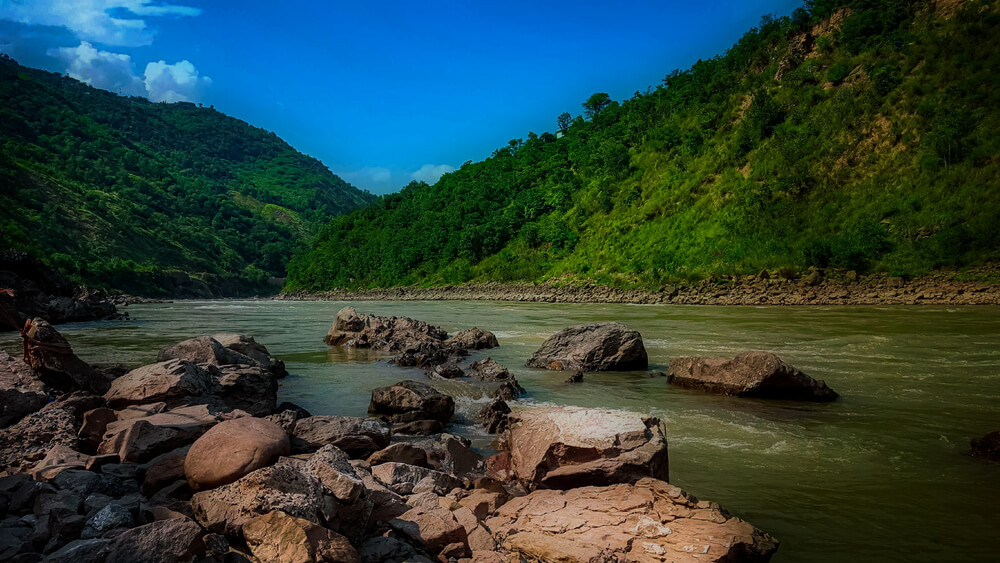
At this time, the construction of a road to international standards is now underway. Because of its stunning appearance, Neel has always held a significant place in Indian culture before and after India’s partition. During the time of the Hindu and Buddhist religions, Sharada Peeth was once the most advanced and up-to-world-standards institution. The river Neelum, renowned for its water’s clarity and azure hue, is the inspiration for the name of this place, which is also spelled Neelum.
Kashmir Abshar at Muzaffarabad
The best place to visit in Muzaffarabad is the Dalai waterfall. It is a common name for Kashmir Abshar among travelers because of its location on Dalai, close to Muzaffarabad. Moreover, the Dalai waterfall is 21 kilometers from Kohala bridge, a popular tourist destination. After the Dhani waterfall, this one is thought to be the second-highest waterfall in all of Azad Kashmir. It is recognized as the first tourist attraction in Azad Kashmir for travelers traveling from Murree to Muzaffarabad, the wonderful capital city of AJK. This is because Muzaffarabad is the most popular destination in Azad Kashmir.
As you travel from Kohala bridge toward Muzaffarabad, you can see this waterfall to your left, situated on the other side of the untamed Jhelum river. You are compelled to pull over and pay a visit to this breathtaking waterfall due to its stunning scenery and unique features.
Khurshid Tomb
The mausoleum of Khurshid is yet another attraction for vacationers to check out while in this sacred area. Khurshid Hassan, a well-known Kashmiri figure, is one of the legendary characters of the Land. He was the first secretary of Muhammad Ali Jinnah. Later, he served his nation in various capacities. It would be best if you planned to visit his tomb to pay tribute to this legendary fellow.
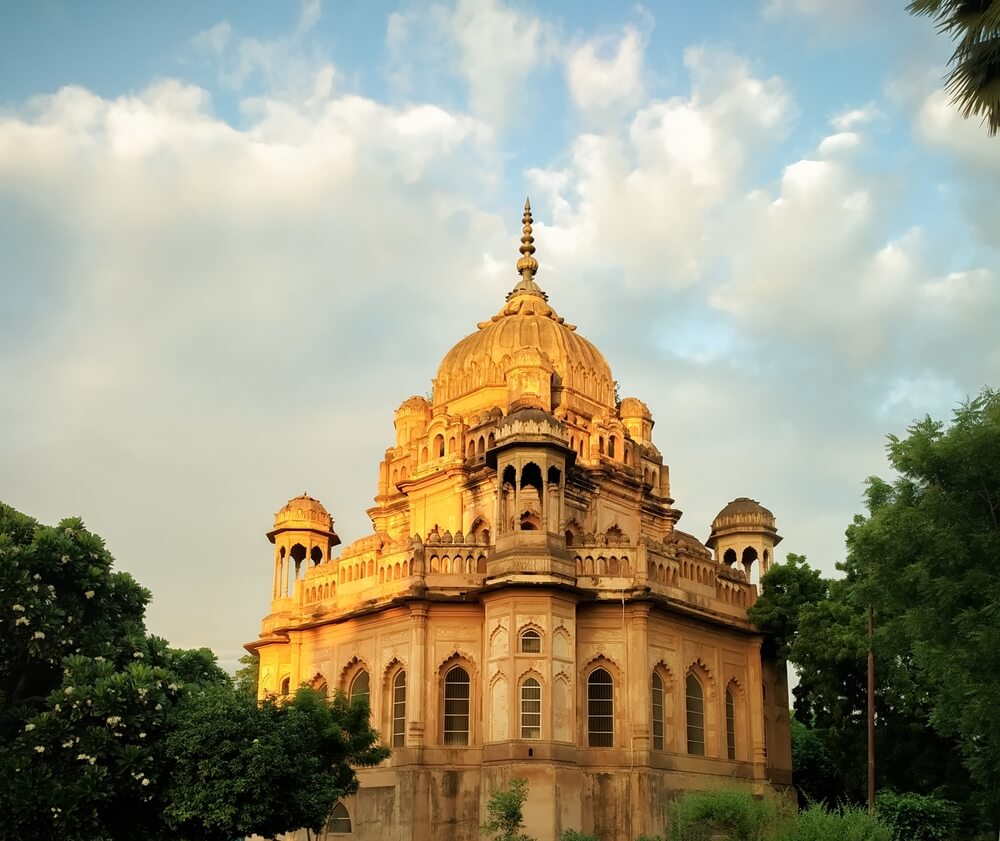
Madina Market Muzaffarabad
The Madina market in Muzaffarabad is one of the most well-known markets in the city, and it offers nearly everything travelers could need. Think of any item you need on a town tour, and you will find it here. It also represents the culture of the area.
Neelum Jhelum Power Plant
The Neelum–Jhelum Hydropower Plant was constructed in Azad Kashmir, Pakistan, as a section of a run-of-the-river hydroelectric power system. Its purpose was to redirect flow from the Neelum River to a power station on the Jhelum River. The power station can be found 42 kilometers (26 miles) to the south of Muzaffarabad, and it has a capacity of 969 megawatts (M.W.) installed. However, construction on the project did not begin until 2008, when a Chinese consortium was awarded the construction contract in July 2007. The project was completed in August 2018 when the fourth and final unit was synchronized with the national grid on August 13 and attained its maximum power generation of 969 MW on August 14. After several years of delays, the first generator was eventually delivered in April 2018. It is anticipated to produce 5,150 GWh (gigawatt hours) yearly at a low price of Rs 13.50 per unit over 30 years.
Shaheed Gali
An easily distracted mind will be drawn to the spot because of its comely charm and want to stay there for longer. The scenic Shaheed Gali can be found around 16 kilometers west of Muzaffarabad. It has an elevation of approximately 1640 meters above sea level.
A journey of about 4 kilometers will take you to a healthy place known as “Sri Kot” if you start from Shaheed Gali. A traveler is sure to be mesmerized by the tranquility of the background of the region they are visiting. At Shaheed Gail, guests can stay in a Tourist Rest House if they need accommodations.
Chikkar
In the Jhelum valley Region of Azad Kashmir, Pakistan, you’ll find the quaint little town and hill station of Chikkar. At an elevation of 1,607 meters, it may be reached by traveling 46 kilometers (29 miles) from Muzaffarabad (5,272 ft). It serves as the administrative center of Tehsil Chikkar.
The Muzaffarabad-Chakothi road splits out at the Sarran bypass road connection (also dubbed the Seri Ramsir Chikar bypass) and Dhanni Baqallan, making it possible to reach the town from Muzaffarabad. Additionally, one can go there from Sudhan Gali. Before the partition of the Indian subcontinent, Chikkar was a significant town and served as the primary commercial hub for the surrounding area.
People from neighboring regions, such as Prem Kot, came to conduct business. Before 1947, the Government School in Chikkar was well-known, and many pupils attended classes there. Chikkar may be the location in the Jehlum Valley with the most significant historical significance. It was one of the most important Hindu and Sikh commercial centers in Kashmir. Many villages here have names hinting at their Hindu heritage, such as Ramsar, Indrasari, and Nagini. The census taken in 1941 revealed a sizable population of people who did not practice Islam in the regions surrounding Chikkar. The earthquake that occurred in 2005 Karli Jaheel or Zalzaal Lake is a manufactured body of water developed close to this place.
Chehla Bridge
When you arrive in Muzaffarabad, you shouldn’t miss the opportunity to walk across the Chehla bridge. The view from this bridge encompasses a vast region.
FAQ’s
Why is Muzaffarabad famous?
The intricately carved wooden furniture that Muzaffarabad is famous for producing is always in high demand. They offer an extensive selection of woods, including Dayyar, Akhrot, and others, and their marketplaces are full of exquisitely carved tables, chairs, and jewelry boxes. Additionally, they accept bespoke orders, and the level of craftsmanship is exceptional. The region is well-known for its excellent woodwork.
Is Muzaffarabad worth visiting?
It would help if you went to the city because it is the location of many well-known landmarks, including the Red Fort and the Pir Chinasi.
What is the famous food of Muzaffarabad?
Chicken curry with a unique Masala blend and an incredibly distinctive flavor is the most famous food. In Muzaffarabad, you can choose between two courses for your Kashmiri pulao: one is made with beef, while the other is made with either mutton or chicken. Namkeen tea is distinguished by adding salt, almonds, and other dried fruit to green tea leaves.
Conclusion
At an elevation of about 720 meters (about 2400 feet), Muzaffarabad serves as the administrative center of Azad Jammu Kashmir. There are many tourist spots in Muzaffarabad. Muzaffarabad is where the rivers Neelum and Jhelum finally come together to form the confluence known as the Neelum-Jhelum confluence. The waters of the Jhelum have a muddy brown tint, while the waters of the Neelum are a bright blue. You will travel almost four hours from Islamabad, the capital of Pakistan. There are many best places to visit in Muzaffarabad. It serves as a staging area for journeys to Kashmir’s most popular tourist destinations. A breathtaking location encircled by valleys and mountains; thanks to recent improvements in the road network, the journey has been made more pleasant, making it simpler to engage in tourism. Snowfall is frequent from December through February, and the temperature is often chilly throughout the year.
In contrast, the summers are pleasant, and there is no requirement for air conditioning. Because of the climate, most of the inhabitants’ wardrobes consist of wool garments. Most homes and buildings are situated on the riverside, and most marketplaces are compact, packed, and have two-story affairs. Most villagers can be seen residing close to the river’s banks because it serves as the village’s main water supply and is also used for agricultural purposes.”

